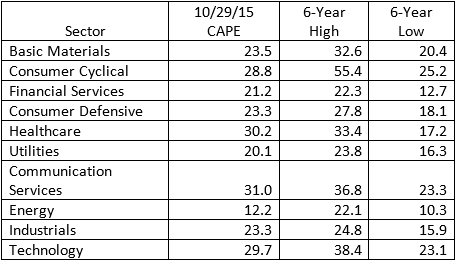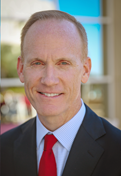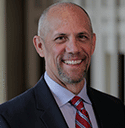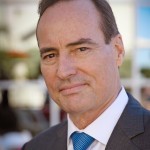Harry S. Dent Jr.'s Blog, page 130
November 2, 2015
There’s Still Value to Be Found In This Expensive Market
 Market volatility has been blamed on a number of factors this year – the Chinese market meltdown, weakness in the oil patch and the never-ending speculation around when (or if) the Fed will ever raise rates being chief among them.
Market volatility has been blamed on a number of factors this year – the Chinese market meltdown, weakness in the oil patch and the never-ending speculation around when (or if) the Fed will ever raise rates being chief among them.
But there is one underappreciated reason for the market’s lack of direction this year, and that’s valuation.
There’s really no way to massage these numbers. Stocks are expensive by virtually any metric you care to choose. Back in September, I highlighted the cyclically-adjusted price/earnings ratio (CAPE), which smooths out the fluctuations of the business cycle by taking a 10-year average of earnings.
Well, based on that metric… stocks are priced to deliver returns of a rather pitiful 0.5% per year over the next eight years.
Don’t spend all of that in one place!
While the overall market is expensive, there are potential pockets of value out there. Using data from research site GuruFocus, I parsed the market into 10 sectors and compared their current CAPE valuation to the high and low values of the past six years.
I consider any sector trading near the bottom of the range to be at least relatively cheap, while any sector trading near the top end of the range would be expensive.
So, how does it look?

As you can see, we have a really mixed bag.
With a CAPE of 31.0, Communication Services is the most expensive sector, though it’s a fair bit cheaper than the 36.8 we saw in July of 2013. All the same, I would expect it to get a lot cheaper. Most of the stocks in this sector are cable TV and phone operators – two subsectors with very limited growth prospects in America.
Healthcare, with a CAPE of 30.2, isn’t far behind. And it’s not far at all from its all-time highs. Adam has been warning his Cycle 9 Alert readers to steer clear of this sector, and I agree.
Yes, the sector is backed by strong demographics, but investors are simply paying too high a price for that growth.
The cheapest sector by a wide margin is energy, trading at a CAPE of 12.2. That’s scraping near its lows of the past six years. Of course, the energy sector is also getting roiled by the crude oil supply glut, and this sector is not without its risks.
Perhaps the most interesting sector right now is consumer cyclicals. At a current CAPE of 28.8, it might not seem particularly cheap. But remember, this sector was trading at a CAPE of 55.4 in late 2010, and the lowest it’s been over the past six years is 25.2.
This is a broad sector that contains everything from automakers to bath towel retailers, so you’d want to pick and choose carefully. But in an otherwise expensive market, you might find some real gems.

Charles Sizemore
Editor, Dent 401k Advisor

October 30, 2015
Investors: Don’t Fall for an Earnings Trap
 I’ll say it right out: I don’t know if the Federal Reserve will raise rates or not.
I’ll say it right out: I don’t know if the Federal Reserve will raise rates or not.
We’re stuck in this cycle where bad news supposedly equals good news. If the economy slips into a coma, the Fed won’t raise rates and stocks could march higher. Interest rates will remain low and investors will go where the money is.
I don’t buy it. The problem with that argument is that earnings stink.
Earnings estimates for the S&P 500 in 2016 have been trimmed by as much as 6%. A lot of the growth we have seen has been generated through financial engineering and accounting gimmickry – things like buying back shares.
While stock buybacks are an easy way to boost earnings per share, it’s just smoke and mirrors. A weak company can take on debt to buy back as much stock as it wants. That doesn’t improve its business. It isn’t a productive use of capital. It may not happen today or tomorrow, but the company has sealed its grave.
So why don’t these companies use the debt to make operations more efficient? To drive margins higher?
Simple: they’re more concerned with increasing earnings per share and making Wall Street happy.
That’s why you must make sure you don’t fall for one of these earnings traps.
Earnings by themselves can be totally meaningless if you don’t know what’s driving them. They’re either driven by fundamentals, or they’re not. Yet investors will hop aboard a stock that beats earnings without doing any of the leg work.
I don’t know if they realize positive earnings won’t stay that way if the source of earnings isn’t sustainable, or if they just don’t care. Some traders just get suckered into a positive bias.
That’s why you’ve really got to look at the companies you invest in to make sure those earnings come from a reliable source.
The first thing I look at is revenue. If management is stuffing the channel by getting customers to commit to a sale now rather than later, they’re affecting their future business. Little games such as these suggest demand for that company’s product is softening.
Cash flow is also important. If the income is low quality, cash flow is suspect, too. Looking at cash flow quality can highlight future negative earnings in the works that will catch most off guard.
These are just two of the six factors I look at to identify a failing business that’s ripe for shorting.
And while most investors obsess over earnings per share, I’m looking for aggressive accounting practices that show a company just begging for pain.
Right now I’m eyeing a couple restaurant stocks who fit the bill. Their sales are going the wrong way, and they seem desperate to mask the fact.
One of them has bought hundreds of dollars in stock buybacks by taking hundreds of millions of dollars in debt. Another is suffering from falling commodity prices and weaker consumer trends.
That one actually just got slaughtered after a disappointing earnings release, but I still see a lot of downside risk if the stock ticks back up.
Either way, there will be plenty more like these in the months ahead. The stock market, on the surface, is still in its heyday. It’s got a lot of people fooled, which leaves businesses with a lot of investors to impress. And that means more financial trickery to come.

Move Over, Humans: The Next Evolution in Science?
 It’s been 20 years since the late Superman actor Christopher Reeve damaged his spinal cord in a riding accident. Now,
It’s been 20 years since the late Superman actor Christopher Reeve damaged his spinal cord in a riding accident. Now,
October 29, 2015
What Politicians Don’t Understand About the Economy
Stocks: The Next Five Years Will Likely Pale in Comparison
 There are plenty of misconceptions about investment systems. Those on the outside tend to think of systems as mysterious, robot-driven, “black box” investment advisors.
There are plenty of misconceptions about investment systems. Those on the outside tend to think of systems as mysterious, robot-driven, “black box” investment advisors.
Those on the inside, however… realize it’s not that complicated (or mysterious).
A systematic investment strategy starts with an idea… which turns into a hypothesis… which is then proven or disproven.
The idea can be as simple as: “I think cheap stocks beat expensive stocks in the long run.” (That’s the basis of value investing, and countless studies have proven it worthwhile.)
Of course, a keen observation about the markets can also be applied on a one-off basis. Take Kyle Bass – founder of Hayman Capital in Dallas – who, in 2006, created a hedge fund to exploit a single hypothesis: that the U.S. subprime mortgage market would implode.
That market did implode. And Kyle Bass was spot on and made a ton of money. But he’ll need to come up with a new great idea for his next fund, or “trade of a lifetime.”
That’s where a systematic investment strategy differs. Unlike Mr. Bass’ exploitation of a rare event, systematic strategies aim to exploit events that occur again and again, with a good deal of regularity.
Cliff Asness of AQR Capital Management (a quantitative/systematic hedge fund) explained the concept quite well when he was interviewed by Steve Forbes. He said (paraphrased):
With systems, you’re leveraging an idea… that cheap always beats expensive, or that low-volatility always beats high-volatility. And you’re applying that idea across hundreds of symbols… so that, in the long run, you’re exploiting the mathematical edge that’s contained in your idea.
To me, that’s the essence of a system. And that’s what I aim to do with Cycle 9 Alert.
The idea behind Cycle 9 Alert is simple: everything cycles through periods of underperformance and outperformance.
That idea applies to sectors within the stock market… to individual stocks within sectors… and also to asset classes outside equity markets, like commodities, currencies and bonds.
The stock market’s not the “be-all and end-all.” Sure, it’s had a great run since early 2009. But the bull market won’t last forever, and may have already ended.
At best, the risk-adjusted returns the U.S. equity markets could produce over the next five years are likely to pale in comparison to the last five years. At worst, any number of global risks could trigger a repeat of the 2008 stock market crash.
That’s why, when stocks turn south, Cycle 9 Alert will look to other areas to turn a profit. And we’ll have the system in place to do it.

Adam
Chief Investment Strategist, Dent Research

October 28, 2015
Negative Interest Rates: The Fed Might Do the Unthinkable
 Sailing can be exhilarating. A 20-mile-per-hour wind pushes everything – crew, boat, sails, hardware – to the limit.
Sailing can be exhilarating. A 20-mile-per-hour wind pushes everything – crew, boat, sails, hardware – to the limit.
But there are other days when the breeze simply dies. If you’re out for a leisurely sail, then no problem. Just crank up the engine. However, if it happens during a race, you can find yourself sitting dead in the water, or worse… going backward with the tide.
A friend of mine was in this exact situation when the skipper called on the crew to lower the anchor. As they scurried about the deck appearing to look busy with the sails, the other boats slowly slipped behind them, floating backward.
In a sense, my friend’s boat gained ground by going nowhere.
The Fed governors have done the same. For all of their talk, they’ve moved ahead by not floating backward with the pack.
Over the last two years, four central banks in Europe did something that was once unthinkable. When their zero interest rate policy (ZIRP) didn’t work, they went lower. They moved interest rates into negative territory, introducing a negative interest rate policy (NIRP).
The European Central Bank (ECB), along with the central banks of Sweden, Denmark, and Switzerland, all charge large depositors to hold cash.
This might seem backwards, because it is. Theoretically, depositors who don’t want to pay the fees could withdraw all of their cash from banks, thereby escaping them.
But that doesn’t work in the real world.
While the average Joe might be able to shut down his checking account, it’s a bit tougher for IBM, Caterpillar, or New York Life Insurance to do the same thing.
Cash management is a multi-trillion dollar industry. Huge sums are moved daily to meet endless obligations, from payroll to bond payments. There’s no way for entities as large as these to avoid, or even minimize, their interactions with the banking system.
So, even though it flies in the face of the modern banking relationship, they pay the fees.
This is not normal. Ordinarily, deposit institutions take cash from clients, pay them interest, and then lend the money at higher rates to borrowers.
Today, banks can’t find enough borrowers. The cash sits unused on their books, collecting dust and costing the banks money. The negative interest rates are supposed to motivate those holding cash to lend it or spend it, thereby driving economic activity.
But without great investment prospects or quality borrowers, there’s no reason to do either. Instead, they hold onto the cash, confident that low inflation or even deflation will keep prices in check so that the cash won’t lose too much value.
While European central banks toy with the unthinkable, on this side of the pond, Fed governors keep sparring over when to raise rates from zero.
They go back and forth over employment and inflation figures, trying to parse out current trends. If the economy is improving, then raising rates now would nip potential inflation before it starts. It would also provide the Fed with some much-needed room for lowering rates in the next downturn.
Interestingly, by doing nothing, the Fed has achieved most of what it wants. Compared to other currencies our rates are high, which attracts depositors, strengthens the U.S. dollar, and taps the brakes on the economy.
So while zero interest might not sound like much, compared to what depositors earn in other countries, it’s a windfall!
The difference grows wider further out on the yield curve. The 10-year U.S. Treasury bond yields around 2.0%. The German 10-year pays a mere 0.5%, while those buying Swiss 10-year bonds must pay the government because the yield is -0.3%!
Looking across our economy, companies are telling the Fed that they feel the pain. Quarterly profits and revenue are set to decline together for the first time since the financial crisis. Earnings are expected to decline by 2.8% for the third quarter and sales, which have been falling all year, are expected to drop by 4%.
Hit by a double whammy of the collapsing energy sector and falling exports, big companies are crying uncle. None of this screams that economic growth is so strong it must be reined in. If anything, it looks like the start of the next downturn is just ahead, if not already underway.
That makes the most likely course ahead not for higher rates, but for the Fed to raise its anchor off zero, and at some point start slipping backward with the rest of the fleet.

Rodney
Short Sellers Smelled Blood… and Got Oprah
 Last week saw the mother of all short squeezes. It highlighted the huge profits that can be made in a short period of time when the strategy works exactly right.
Last week saw the mother of all short squeezes. It highlighted the huge profits that can be made in a short period of time when the strategy works exactly right.
Before I get to that, a short squeeze happens when short sellers who are negative on a company’s prospects have heavily bet against a stock. They pile in with bearish bets hoping the stock craters at the first sign of bad news.
When the company instead releases good news, such as a positive earnings report, the short sellers run for cover and buy back some of their short position. This buying power forces the stock price up. To add insult to injury, fresh buyers usually come in and bid the stock even higher, which adds to the short sellers’ pain.
This is a strategy we actively use in Forensic Investor.
Two of our current positions are short squeezes. Last week, one of those stocks was up nearly 30% on the day of its earnings announcement. We sold half of this position yesterday for a tidy profit.
But the most violent short squeeze I have seen was in shares of Weight Watchers (NYSE: WTW) last week.
Everyone knows Weight Watchers. The company is well known for its weight management programs.
Recently though, earnings had been under pressure and the stock price got hammered. Trading at nearly $30 a year ago, shares dipped below $4 this summer.
Shorts piled in at the smell of blood. According to data from Yahoo!, nearly 75% of the float (shares available for trading) was short. I checked with a Wall Street loan desk and the cost to borrow the shares was 20% annualized. That’s nutty.
While the shorts were counting their paper profits and the stock price slid further toward oblivion, they didn’t count on Oprah Winfrey coming in and taking a $43.2 million stake in the company.
If there’s ever a game changer for a company, it’s Oprah Winfrey. She’s not just a Personality with a capital “P” – she’s one of the most powerful brands in the world. Tens of millions of people hang on her product endorsements to improve all aspects of their lives.
Not only did Oprah take a big position in the stock, she’s also promised to do joint marketing and branding projects. That’s nothing if not good news for a battered company. It has the potential to be a total game changer.
On that news, the stock shot up 131% last week! The day of the announcement led to a 105% gain.
I haven’t seen moves like that in major companies since the Internet Bubble. The stock went from $6.29 to nearly $20 in three days before settling in at $16.68.
This move buried a lot of short sellers. And it’s a great illustration of how much pain can be inflicted when shorts are wrong.
That’s why we focus on lower short interest stocks when we short in Forensic Investor – that is, stocks that don’t cost your grandmother’s armchair to borrow.
I want to find a losing company that’s not on everyone’s radar. Those who were shorting Weight Watchers at 20% interest were just begging for trouble.
But this is also a great illustration of the sometimes massive gains you can get on the right side of a short squeeze, and they’re not too hard to spot. Just watch what everyone else is doing and go the other way. It’s a strategy we’ll continue to use in Forensic Investor for months and years to come.

October 27, 2015
The Debt Ceiling Debate: What Congress Should Be Talking About
 Once again, Congress and the White House are at odds. Their fight over spending has carried over into a decision about raising the debt ceiling. If they don’t agree to put the nation in more debt by early November, then the U.S. risks missing essential payments such as interest on our bonds.
Once again, Congress and the White House are at odds. Their fight over spending has carried over into a decision about raising the debt ceiling. If they don’t agree to put the nation in more debt by early November, then the U.S. risks missing essential payments such as interest on our bonds.
The entire episode is a wasted opportunity.
They’re focused on what to spend, when that’s already been decided.
They should be talking about how much we spend, which is what the national debt is all about.
Congress consistently votes to spend more than the government receives in taxes and fees. So, the country issues more debt every year to keep the government running.
This seems pretty basic – if you spend more than your income, the extra funds must come from somewhere. If you don’t have savings, then debt is the logical answer.
The problem is that the vote on borrowing more money is separate from the vote on how much to spend. So even though Congress passes a budget – or at least a continued spending bill – it doesn’t necessarily agree on more debt at the same time.
This mismatch of what to spend versus what to borrow leads to situations like we have today. Congress already committed to the cost of operations, but now some members are delaying the actual process of spending.
The absurd part is that the congressmen opposed to raising the debt ceiling aren’t complaining about the amount of debt we have. They’re arguing about where the funds should go.
I don’t have a problem with lawmakers raising a stink over how the government spends money. That’s part of their job.
But that fight belongs in the budget negotiations. Maybe if they spent more time on developing an actual budget – where income and spending are equal – then we wouldn’t have to worry about the debt ceiling, but that’s not the case today.
The conversation about raising the debt limit should be a foregone conclusion. They’ve already agreed to spend the money.
It does, however, give us a chance to examine a festering problem that we’ve all grown accustomed to overlooking.
The U.S. government is hopelessly insolvent.
The fiscal year just ended on September 30. For the year, the U.S. budget deficit dropped by $44 billion to a mere $439 billion. Some members of Congress and the administration are crowing about how small the deficit has become, which now represents only 2.5% of GDP.
That’s the wrong way to look at it.
While the latest shortfall is a lot less than the $1 trillion-plus deficits of 2009 and 2010, it still means we’re borrowing roughly half a trillion dollars a year to keep up our spending habit.
And since the government doesn’t collect total GDP in taxes, looking at the deficit as a percentage of GDP misses the point. The government collected $3.249 trillion last year and spent $3.688 trillion.
The deficit was 13.5% the government’s income. That’s completely different from GDP, and the more appropriate perspective.
The cumulative U.S. debt stands at $18.4 trillion, more than 560% of what the government collected in taxes and fees last year. Chunks of this are held in inter-governmental holdings and at the Fed, but the point remains that we’ve borrowed wildly more than we take in.
The forecast of future deficits isn’t encouraging. The Congressional Budget Office (CBO) estimates we will hit $20 trillion in debt in two years, and $25 trillion in less than 10 years.
Of course, the CBO forecasts that GDP will grow by more than 4% next year, and then average 4% in the years that follow. We’re skeptical. If economic growth falls short, then so will tax receipts, which could push the deficits, and debt, even higher.
How much debt is too much? When is the debt burden too high? More debt ultimately means higher interest rates to repay the debt, which would cause the currency to fall, thereby forcing down our standard of living.
So far that hasn’t happened. In the next several years, we don’t think this will occur, but only because the U.S. will be stronger than its monetary rivals. After that, who knows?
We shouldn’t wait to find out the consequences. We should use this time of low interest rates and seemingly endless funds chasing U.S. Treasurys to tame our spending habits. That way, when the bill finally comes due, we’ll at least have a head start on cutting what we owe.
But I don’t expect that to happen. Instead, during the current battle over the debt ceiling, we’ll get endless debates over where the money goes, without so much as a mention of how much we owe. It will be another in a long list of opportunities squandered.

Rodney
Past the Point of Fundamentals: It’s All on the Central Banks
 The post-season for Major League Baseball is in full swing and the World Series features two teams with the best pitching, the most consistent hitting and great defense.
The post-season for Major League Baseball is in full swing and the World Series features two teams with the best pitching, the most consistent hitting and great defense.
Sorry Cubbies fans… fundamentals matter!
Last week brought more poor earnings results and 2016 earnings are being lowered substantially. But what made stocks move late last week were promises by the European Union for continued quantitative easing.
Piling on top of those promises by the EU for continued easing, the Chinese central bank cut interest rates for the sixth time in a year last Friday. Traders sold out of the safety of U.S. Treasury bonds and bought more stocks.
Even yesterday’s poor new home sales report along with a disappointing Dallas Fed manufacturing survey didn’t send stocks much lower. So, as long as central bankers are helping out, investors won’t be inclined to sell their stocks.
It seems that fundamentals don’t matter in today’s market. Investors aren’t looking at the current state of our economy or even future corporate earnings. They are just looking for more help from central banks around the globe and wondering if, hoping that our Fed follows suit.
And that’s the big if!
With equities trading near all-time highs, and the economy doing relatively okay at least compared to the rest of the world, an interest rate hike is a little more likely.
Fed Chair Janet Yellen can certainly hold off on raising rates based on low inflation and wage growth. But maybe she’ll look at the bubbling stock market and hike anyway. We’ll have to wait and see if the Fed caves to international pressure (again) and holds off on a rate hike.
While stock market volatility has been high, bond volatility has been extremely low. The chart below shows the long-term Treasury yield has gone nowhere in the last month (red arrow) but the longer trend lower is still intact (green arrow).
It’s very likely the Fed will continue to talk about a possible rate hike, but I doubt they’ll act without an improving economy.
Over the longer term, U.S. Treasury yields should continue to fall unless fundamentals improve in our economy, and Dent Digest Trader subscribers are well positioned for the longer term trend.

Lance Gaitan
Editor, Dent Digest Trader

October 26, 2015
Harry Dent at the 16th World Knowledge Forum
 I doubt you can guess where my book The Demographic Cliff is doing best. It isn’t the United States. It’s not even Australia, where I’ve also had extensive media coverage.
I doubt you can guess where my book The Demographic Cliff is doing best. It isn’t the United States. It’s not even Australia, where I’ve also had extensive media coverage.
No, it’s in South Korea of all places. All I’ve done there is speak at two (albeit large) financial conferences and done a few newspaper interviews. But for some reason, what I have to say resonates with those people.
So when I was invited to speak at the 16th World Knowledge Forum in Seoul, I said yes… despite the fact that it’s a grueling trip to go there for four days. I’m talking serious jet lag.
This is a major conference. It attracts all sorts of attendees outside of Korea. Maeil Business Newspaper, South Korea’s main business daily, puts on the event. Its chairman, Chang Dae-whan, was the acting prime minister of South Korea in 2002.
There were over 100 speakers and panelists. Some of them come with a high profile, like former British Prime Minister Tony Blair, former Treasury Secretary Timothy Geithner, former Defense Secretary Leon Panetta, NYU economist Noriel Roubini and billionaire John Paul Dejoria. All were leading entrepreneurs, academics, or political types.
I was on one of the first panels, “Megatrends 2050,” where I got to meet and speak with two people I respect.
The first was Don Tapscott. Don wrote The Digital Economy about 20 years ago.
I was surprised when he reminded me how old the book was.
He didn’t just look at the superficial changes. We all know a digital economy means more people working on computers.
No – Don covered the implications of a huge paradigm shift, the unprecedented effect of an economy run through a screen. The book sits on my shelf and comes highly recommended.
The second was Nathan Blecharczyk, co-founder of Airbnb, the website through which people run bed and breakfasts out of their homes. Readers know I’ve dedicated entire writings to this staple of the Sharing Economy. It was a real treat to take the stage with him.
I covered another important development – the “Tiger Economies,” named for their fierce and rapid progress to developed nation status. They are Japan, South Korea, Taiwan and Singapore.
This is a daunting task that few nations achieve. Most assume emerging countries like China, India and Brazil will become as rich as developed countries. My research shows they haven’t and won’t – not even close.
That’s why the handful that have achieved this rare feat are named after the tiger. There is no creature more feared and admired in Asia.
That made sitting on my next panel difficult, where I discussed the impacts of South Korea’s demographic trends.
 There’s good and bad to South Korea. The good – it will be the last developed nation to fall off the demographic cliff. Its baby boom doesn’t peak until 2018.
There’s good and bad to South Korea. The good – it will be the last developed nation to fall off the demographic cliff. Its baby boom doesn’t peak until 2018.
The bad – South Korea is aging just as fast as Japan, the demographic junkyard of the world, and Germany, which I’ve warned has the worst demographics in Europe in the coming decade.
The country’s peak may come later than other developed nations. But its fall from glory will be all the more severe. Especially given that I predict the next global crisis will come well before its demographic peek. China’s fall will also hit them hard. South Korea exports 50% of its GDP – higher than any developed country in the world – with China a leading consumer.
Others on the panel, such as Professor Eugenia Kalnay, discussed the significance of climate change. She said we need clear global standards that do not allow countries like China to cheat by polluting so much to save costs. I agreed – a lot. She was surprised by how much.
Still others discussed the potential for a unified North and South Korea.
This was another great idea! Eventually Korea will have to come up with some solution to handle its demographic decline. It has few options for attracting substantial immigration. Unlike Singapore, it lacks a large English-speaking population connecting it to the rest of the developed world.
 This was a great panel. Maeil Business Newspaper – the group behind the event – liked it so much they featured it on their front page.
This was a great panel. Maeil Business Newspaper – the group behind the event – liked it so much they featured it on their front page.
I had an hour-long talk with Chairman Dae-whan. He’s the author of One Asia Momentum, which imagines an economic block in Asia similar to the one in Europe. I was impressed with his vision for both Korea and Asia.
I like South Korea. I’ve visited on two other occasions. It’s an impressive country and Seoul a beautiful and modern city. South Korea was never on my bucket list, nor those of most people I know. But my wife and I enjoyed it very much.
We’ve stayed before at the Banyan Tree, located at the most scenic point on a small mountain overlooking the old city. We were sold by the large hot tub in the middle of the oversized bedroom – a 180-degree view. Its interior décor was a bit dated, but that was part of the charm.
Just below was the Shilla, the hotel where the conference was held. It’s likely the best and most modern hotel in Seoul, fitting for a large convention like this.
In a couple days I’m heading to meet Andy Pancholi, a cycle expert out of London, and also speak at the Elite Investor Summit. After that, another on my bucket list – Marrakesh, Morocco.
Traveling, speaking – it doesn’t get better than this.

Harry
Follow me on Twitter @harrydentjr





